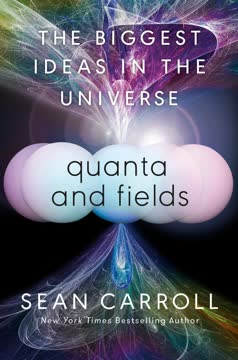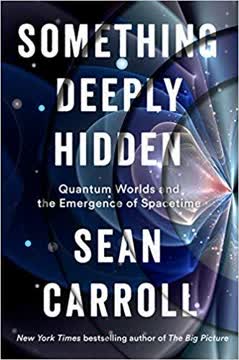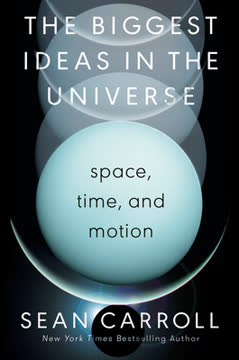Key Takeaways
1. The Universe Is Governed by Patterns, Not Purposes
Physics is made possible by the fact that the world exhibits a certain amount of continuity and predictability.
Shift from teleology to patterns. The scientific revolution marked a profound shift from viewing the universe as guided by purposes to understanding it through patterns and laws. This transition, exemplified by the work of Galileo and Newton, moved away from Aristotelian ideas of natural states and purposes towards a view of the universe as a system governed by mathematical laws.
Laplacian paradigm. The Laplacian paradigm embodies this new perspective, asserting that the complete state of a system at one moment, combined with the laws of physics, can determine its entire past and future. This deterministic view underlies much of classical physics, emphasizing the importance of initial conditions and universal laws in predicting physical phenomena.
Key aspects of the pattern-based view:
- Rejection of inherent purposes or goals in nature
- Focus on observable and measurable quantities
- Emphasis on mathematical descriptions of physical laws
- Belief in the universality and immutability of these laws
2. Conservation Laws Reveal Fundamental Symmetries in Nature
A symmetry is a transformation you can do to a system that leaves its essential features unchanged.
Noether's theorem. Emmy Noether's groundbreaking work established a profound connection between conservation laws and symmetries in physics. Her theorem states that for every continuous symmetry in a physical system, there is a corresponding conserved quantity. This insight has become a cornerstone of modern physics, providing a deep understanding of why certain quantities remain constant in nature.
Examples of symmetry-conservation pairs:
- Time translation symmetry → Conservation of energy
- Space translation symmetry → Conservation of momentum
- Rotational symmetry → Conservation of angular momentum
These conservation laws are not just mathematical curiosities but fundamental principles that govern the behavior of everything from subatomic particles to galaxies. They provide powerful tools for understanding and predicting physical phenomena, often simplifying complex problems by revealing underlying constants in seemingly chaotic systems.
3. Spacetime Unifies Space and Time in Relativity
In relativity, it's no longer true that space and time have separate, objective meanings. What really exists is spacetime, and our slicing it up into space and time is merely a useful human convention.
Minkowski spacetime. Einstein's special relativity, formulated mathematically by Hermann Minkowski, introduced the concept of spacetime – a four-dimensional continuum where space and time are inextricably linked. This unification challenges our intuitive notions of absolute time and simultaneous events.
Key features of spacetime:
- Light cones define causal structure
- Proper time replaces absolute time
- Relativity of simultaneity
- Spacetime intervals are invariant
The spacetime perspective resolves apparent paradoxes in special relativity, such as length contraction and time dilation. It provides a geometric interpretation of these effects, showing that they arise from different ways of slicing the four-dimensional spacetime into three-dimensional spaces at different times. This framework has profound implications for our understanding of causality, the nature of time, and the structure of the universe.
4. Curved Spacetime Explains Gravity in General Relativity
According to general relativity, spacetime is curved, and unaccelerated objects move along geodesics of that curved manifold.
Gravity as geometry. Einstein's general relativity reinterpreted gravity not as a force, but as a consequence of the curvature of spacetime. This revolutionary idea explains gravitational phenomena as the natural motion of objects through a curved four-dimensional spacetime, where massive objects create "dents" that other objects follow.
Key concepts in general relativity:
- Principle of equivalence: Gravity and acceleration are locally indistinguishable
- Einstein field equations: Relate spacetime curvature to energy and matter distribution
- Geodesics: Paths of freely falling objects in curved spacetime
- Gravitational time dilation: Time passes slower in stronger gravitational fields
General relativity has passed numerous experimental tests, from the precession of Mercury's orbit to the detection of gravitational waves. It provides a comprehensive framework for understanding cosmic phenomena like black holes, the expansion of the universe, and the bending of light by massive objects.
5. Black Holes Are Extreme Consequences of Spacetime Curvature
According to the cosmic censorship conjecture, formulated by Penrose in 1969, any singularity predicted by general relativity will be hidden behind an event horizon.
Nature of black holes. Black holes represent regions of spacetime where gravity is so intense that nothing, not even light, can escape. They are characterized by an event horizon, beyond which events cannot affect an outside observer. The interior of a black hole contains a singularity, a point where our current physical theories break down.
Key properties of black holes:
- Event horizon: The boundary of no return
- Singularity: A point of infinite density and curvature
- Hawking radiation: Quantum effect causing black holes to emit radiation
- No-hair theorem: Black holes are characterized only by mass, charge, and angular momentum
Black holes play crucial roles in astrophysics, from stellar evolution to galactic dynamics. Their study continues to push the boundaries of our understanding of gravity, quantum mechanics, and the nature of spacetime itself.
6. The Laws of Physics Are Best Expressed Mathematically
Equations are not that scary. They are just a way to compactly summarize a relationship between different quantities.
Mathematical language of physics. Mathematics provides the most precise and powerful language for expressing physical laws. Equations capture complex relationships succinctly and allow for quantitative predictions. Understanding the mathematical formulation of physical theories is crucial for grasping their full implications and power.
Key mathematical tools in physics:
- Calculus: Describing continuous change and accumulation
- Linear algebra: Handling multiple dimensions and transformations
- Differential geometry: Describing curved spaces
- Tensor analysis: Generalizing vectors and scalars
While mathematical formalism can be intimidating, it's essential to recognize that equations represent real physical relationships. Developing intuition for these mathematical structures is a key part of understanding modern physics. The ability to translate between mathematical expressions and physical concepts is a crucial skill for both theoretical and experimental physicists.
7. Scientific Progress Often Involves Challenging Intuition
If it were intuitive, you wouldn't have needed to be Einstein to come up with the idea.
Counterintuitive discoveries. Many of the most significant advances in physics have involved ideas that initially seemed to contradict common sense or everyday experience. From the Earth orbiting the Sun to quantum superposition, scientific progress often requires us to set aside our intuitions and follow the evidence and logical consequences of our theories.
Examples of counterintuitive concepts:
- Relativity of simultaneity
- Wave-particle duality
- Quantum entanglement
- Expansion of space itself
Challenging intuition doesn't mean abandoning reason; rather, it involves carefully examining our assumptions and being willing to follow logical arguments to their conclusions, even when they lead to surprising results. This process of questioning and refining our understanding is at the heart of scientific progress.
8. Quantum Mechanics and General Relativity: Incompatible Yet Successful Theories
Most physicists think that singularities don't really exist in nature, naked or otherwise. Their prediction is a sign that we've taken our theory too seriously in a regime where it should be expected to break down.
Reconciling quantum and gravity. Quantum mechanics and general relativity are both extraordinarily successful theories in their respective domains, yet they are fundamentally incompatible. This incompatibility becomes particularly apparent in extreme conditions, such as the interiors of black holes or the early moments of the universe.
Key challenges in reconciling quantum mechanics and gravity:
- Different treatments of space and time
- Problem of quantum measurement in curved spacetime
- Singularities in general relativity
- Non-renormalizability of gravity in quantum field theory
The search for a theory of quantum gravity that can reconcile these two pillars of modern physics is one of the greatest challenges in theoretical physics. Approaches like string theory and loop quantum gravity attempt to bridge this gap, but a fully satisfactory theory remains elusive. This ongoing quest pushes the boundaries of our understanding of the most fundamental aspects of reality.
Last updated:
FAQ
What's The Biggest Ideas in the Universe by Sean Carroll about?
- Exploring Modern Physics: The book aims to make modern physics accessible, covering fundamental concepts like space, time, and dynamics, leading to more complex ideas such as gravity and black holes.
- Three-Part Series: This is the first of a trilogy, focusing on "Space, Time and Motion," with subsequent volumes on "Quanta and Fields" and "Complexity and Emergence."
- Equations and Understanding: Carroll emphasizes the importance of understanding equations to grasp the essence of physics, likening it to driving without being a professional race-car driver.
Why should I read The Biggest Ideas in the Universe by Sean Carroll?
- Accessible Learning: Carroll's writing is designed for non-experts, making complex topics approachable and understandable with minimal mathematical background.
- Empathetic Teaching Style: The author is praised for explaining difficult concepts without condescension, fostering a welcoming learning environment.
- Broadening Perspectives: The book encourages meaningful engagement with modern physics, fostering informed discussions on topics like dark matter and quantum mechanics.
What are the key takeaways of The Biggest Ideas in the Universe by Sean Carroll?
- Conservation Laws: Discusses fundamental conservation laws, such as energy and momentum, crucial for understanding physical systems.
- Dynamics and Change: Emphasizes the importance of dynamics, detailing how systems evolve over time based on initial conditions.
- Spacetime Concept: Introduces spacetime as a unified framework essential for understanding relativity and gravity.
How does The Biggest Ideas in the Universe by Sean Carroll explain the concept of spacetime?
- Unified Framework: Spacetime is described as a four-dimensional continuum combining space and time, crucial for understanding object interactions.
- Curvature and Gravity: Mass causes spacetime to curve, which we perceive as gravity, shifting the perspective from gravity as a force to a geometric property.
- Light Cones: Introduces light cones, representing possible light paths through spacetime, essential for understanding causality and universe structure.
What is the conservation of energy as explained in The Biggest Ideas in the Universe by Sean Carroll?
- Definition of Conservation: Energy cannot be created or destroyed, only transformed, with total energy remaining constant throughout processes.
- Forms of Energy: Energy exists in various forms, such as kinetic and potential, crucial for analyzing energy transfer and transformation.
- Practical Implications: This principle underpins many scientific and engineering applications, allowing predictions about system behavior over time.
What is the twin paradox discussed in The Biggest Ideas in the Universe by Sean Carroll?
- Thought Experiment: Involves two twins, one traveling at near-light speed and the other on Earth, with the traveling twin aging slower due to time dilation.
- Relativity of Time: Illustrates how time is experienced differently based on relative motion, challenging the notion of absolute time.
- Proper Time Measurement: Highlights that proper time depends on each twin's path through spacetime, emphasizing the personal nature of time in relativity.
How does The Biggest Ideas in the Universe by Sean Carroll address the concept of dynamics?
- Understanding Motion: Dynamics studies forces and their effects on motion, explaining how and why objects move.
- Newton's Laws: Discusses Newton's laws of motion as foundational principles governing dynamics, essential for classical mechanics.
- Energy and Forces: Dynamics is closely tied to energy, with potential and kinetic energy playing crucial roles in system evolution.
What is the significance of the Schwarzschild solution in The Biggest Ideas in the Universe by Sean Carroll?
- Black Hole Metrics: Describes spacetime geometry outside a spherical, non-rotating mass, providing a framework for understanding black holes.
- Event Horizon: Defines the event horizon of a black hole, beyond which nothing can escape, fundamental to black hole studies.
- Implications for Astrophysics: Influences the understanding of star behavior and galaxy dynamics, serving as a cornerstone for gravitational theories.
What are gravitational waves, as described in The Biggest Ideas in the Universe by Sean Carroll?
- Ripples in Spacetime: Disturbances in spacetime curvature caused by accelerating masses, like merging black holes, propagating at light speed.
- Detection and Significance: The detection by LIGO marked a new era in astrophysics, allowing observation of previously undetectable cosmic events.
- Impacts on Cosmology: Provide insights into black holes and universe dynamics, enhancing understanding of fundamental physics and spacetime.
How does The Biggest Ideas in the Universe by Sean Carroll explain the principle of least action?
- Foundational Concept: States that the path taken by a system minimizes the action, central to Lagrangian mechanics.
- Action and Energy: Action is the integral of the Lagrangian, the difference between kinetic and potential energy, determining the trajectory.
- Applications in Physics: Allows derivation of equations of motion, applicable across physics fields, emphasizing the elegance of physical laws.
What is the no-hair theorem mentioned in The Biggest Ideas in the Universe by Sean Carroll?
- Black Hole Characteristics: States that black holes are described by mass, electric charge, and angular momentum, with other information lost.
- Implications for Black Hole Physics: Simplifies black hole study, suggesting they are simple objects despite complex formation processes.
- Connection to Entropy: Relates to black hole entropy, proportional to event horizon area, leading to insights into black holes and thermodynamics.
What are the best quotes from The Biggest Ideas in the Universe by Sean Carroll and what do they mean?
- "Time is relative.": Emphasizes that time is experienced differently based on motion and gravity, challenging the notion of time as a constant.
- "Gravity is not a force, but a curvature of spacetime.": Reflects the shift in understanding gravity through general relativity, highlighting its geometric nature.
- "The universe is a grand tapestry of interconnected ideas.": Illustrates the theme of unity in physics, showing how theories and concepts are interrelated.
Review Summary
The Biggest Ideas in the Universe: Quanta and Fields is praised for bridging the gap between popular science and academic physics, offering a deep dive into quantum mechanics and field theory. Readers appreciate Carroll's clear explanations and use of equations, though some find the content challenging. The book is commended for its accessible approach to complex topics, but criticized for occasional density and assumptions of prior knowledge. Overall, it's seen as a valuable resource for those seeking a more rigorous understanding of quantum physics, despite its demanding nature.
Similar Books

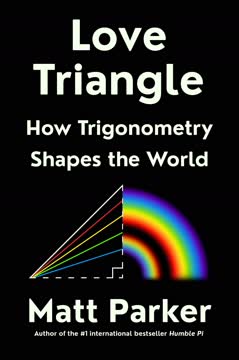




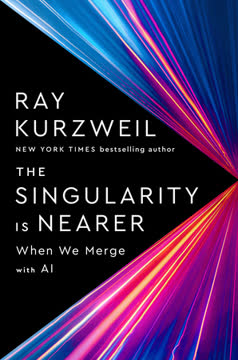
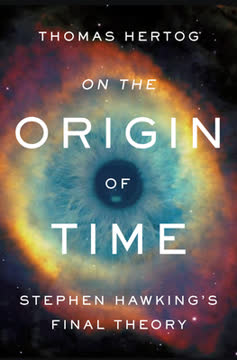

Download PDF
Download EPUB
.epub digital book format is ideal for reading ebooks on phones, tablets, and e-readers.
